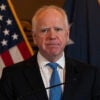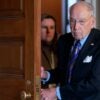Homeroom has taken on a literal meaning over the past two months. Parents, while always their children’s first and foremost educators, have had to fully embrace homeschooling as a result of the COVID-19 pandemic. And although that has been working great for many families – some 40% now say they’re more likely to continue homeschooling even when schools reopen – for others, it is either not the right fit for their child or doesn’t work with their job requirements.
Many families rely on that custodial function of the physical K-12 school to enable them to go to work. And although teleworking is likely to become a more prominent feature of American life moving forward, many families are eager to reunite their children with their teachers and classmates in person, in their public, charter, or private schools. Governors, school districts, and principals should plan to reopen schools safely as soon as possible.
The National Coronavirus Recovery Commission recently released a comprehensive set of 264 recommendations to guide America through this pandemic, while protecting both lives and livelihoods. The work of local school leaders in the public and private sectors will play a critical role in helping America get back to work, and the economy back on track.
What follows is a list of 10 recommendations put forward by the commission geared specifically toward K-12 schools across the country.
1. K-12 schools should act proactively in concert with state and local health officials to assist school administrators in making reopening decisions. School leaders should review all aspects of the school’s facilities and operations, looking for ways to best prevent transmission. That includes student transportation to and from school; class schedules, density, and layout; rotation of teachers instead of students; pedestrian traffic patterns; and the use of personal protective equipment and hand sanitization. They should implement thorough cleaning and sanitization guidelines for all surfaces, especially eating areas, locker rooms, and bathrooms.
2. State and local governments should allow K–12 schools to open this fall and selectively quarantine any students, faculty, or staff who show COVID-like symptoms by sending them home. Districts that have low incident rates should begin plans to reopen, and all school districts should have emergency response plans (including quick transitions to online learning) if they are forced to close again. If a student is sent home due to illness, or if a school has to close, the school should continue to provide online instruction for students who are sent home. For parents who choose to keep their children at home, schools should continue to offer online instruction while enabling students to demonstrate proficiency in mandatory subjects.
3. State and local governments should make decisions based on data for the local district, and even the specific school, not the entire state. If the cases in a single school that is not geographically connected to another school or schools rise beyond the number deemed appropriate by health professionals, in-person operations in an entire state or district do not need to be suspended.
4. State and local governments should consider suspending in-person operations schoolwide only if a school’s COVID-19 cases increase beyond an acceptable number as determined by health professionals. In the event of a local outbreak, school personnel should consult with health officials as to whether social distancing rules should be applied to certain events, such as athletic events, but such disruptions should be implemented only on an as-needed basis.
5. States should help families return to work and students maintain education continuity by making education funding student-centered and portable. Families across the country are currently unable to access the public schools they pay for through their tax dollars and are looking for continuity in their children’s education. In order to help families maintain education continuity, states should restructure per-pupil K–12 education dollars to provide emergency education savings accounts (ESAs) to students, enabling them to access their child’s share of state per-pupil funding to pay for online courses, online tutors, curriculum, and textbooks so that they can continue learning.
6. States with online schools lift any barriers to access, including caps, enrollment restrictions, or grade prohibitions for students in grades K–12. Every student should have equal access to online education regardless of zip code or district boundary, and all students—regardless of academic need or socioeconomic circumstance—should have access to online education options.
7. Congress should provide spending flexibility with existing education dollars. The CARES Act passed in April allowed schools flexibility to carry forward unused Title I spending and repurpose existing professional development spending for online instruction. Congress should build on this flexibility and allow states to use all of their existing federal education dollars for any lawful purpose under state law.
8. Congress should make federal funding portable for children from low-income families and children with special needs. Congress should immediately make funding authorized under the Individuals With Disabilities Education Act (IDEA) student-centered and portable, allowing children with special needs to access learning services to which they are entitled under federal law. Similarly, Congress should allow federal Title I dollars for low-income districts to follow students to private online education options of choice.
9. Congress should also support the education of military-connected children. The children of active-duty military families currently do not have access to the public schools nearest to the base to which their parents are assigned. Congress should provide the children of active-duty military families with education savings accounts, enabling them to access online tutors, online courses, textbooks, and curricula to provide educational continuity during this time.
10. Congress should expand access to 529 savings accounts. Congress should allow Americans to access their 529 savings plans for homeschooling expenses. Currently, 529 saving plans can pay for a broad range of education-related costs, such as college expenses and, more recently, private elementary or secondary school tuition. Yet homeschooling expenses are excluded from the eligible uses of 529 savings accounts. Immediately expanding qualified expenses to include homeschooling—reflecting the fact that nearly every American family currently has to homeschool as a result of COVID-19—would be a timely and targeted policy.
Students can’t afford to have their education put on hold, and parents, as taxpayers, should have access to the money that is spent on behalf of their children in schools across the country. These 10 recommendations will help quickly get American education back on track, safely and more effectively than ever.
For the complete list of recommendations, visit the National Coronavirus Recovery Commission’s website at CoronavirusCommission.com.
































